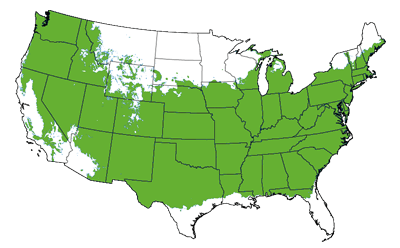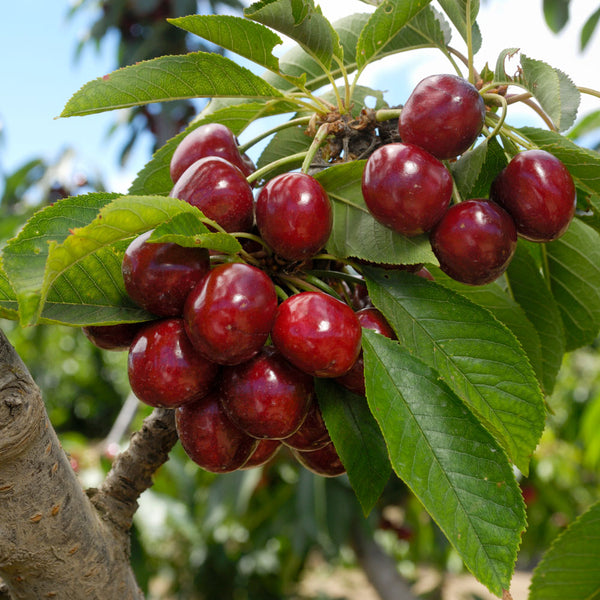Black Tartarian Cherry Tree
Product Details
 Growing Zones 5-8
Growing Zones 5-8
| Soil Type | Adaptable, Well Drained |
| Sunlight | Full |
| Drought Tolerance | Poor |
| Mature Height | 10-15 Feet |
| Mature Width | 10-15 Feet |
| Growth Rate | Moderate |
| Bloom Color | White |
| Shipping Restriction | AZ, CA, ID, WA |
The Black Tartarian is a popular, sweet cherry tree. It produces an abundant amount of dark red fruit - perfect for eating fresh or making juice. You'll get juicy ripe cherries in one year right in your backyard.
Black Tartarians are rapid, hassle-free growers. Besides its delicious fruit, this tree shows off in the spring with a bounty of white blossoms. At only 10 feet wide by 15 feet tall, this dwarf fruit tree is perfect for just about any yard size.
The Black Tartarian Cherry Tree requires cross-pollination. Top pollinators include the Rainier Cherry Tree, The Bing Cherry Tree, and The Montmorency Cherry Tree. This tree requires 700-800 chill hours (air temperatures between 32˚ and 45˚ F).
Planting
The Black Tartarian Cherry Tree will thrive in almost any kind of soil, however it prefers a well-drained spot that won't remain soggy for long periods of time.
This tree prefers full sun so choose a location that receives at least 6 to 8 hours of sunlight. When you're ready to plant, dig a hole twice as wide as the root ball and just as deep. Place the tree in hole and backfill with soil, watering as you go in order to settle the soil and remove air pockets. Apply 2-3 inches of mulch to preserve moisture.
Watering
If your tree receives an inch of rain every 7-10 days, then you do not need to water it. However, during long periods of extreme heat or prolonged periods without rain, you may need to additional water. Use a hose at a slow trickle for 30-60 seconds once a week. Not sure when to water? Push your finger 2 inches into the soil. If it is dry, it's time to water.
Fertilizing
Fertilize in the spring and again midsummer with a low-nitrogen, balanced fertilizer such as 10-10-10. Apply 6-8 inches away from the trunk. Apply 2 weeks after planting and 4 weeks after the first application.
Maintenance
Prune any dead or diseased branches. To encourage horizontal branch growth, prune once a year in late winter when the tree is dormant.










